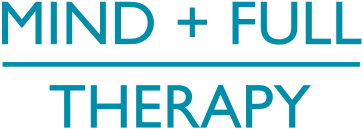Feel It to Heal It: Using Music to Process Emotions (downloadable zine)
Have you ever heard a song that stopped you in your tracks because it felt like it understood exactly how you were feeling?
That’s the power of music. It bypasses logic and goes straight to the heart. In therapy, we often talk about learning to recognize, name, and safely express our emotions. Music can be a powerful bridge to that emotional world, especially when words feel too hard to find.
This blog explores how music can help you process emotions and includes a free, fun zine to help you explore the songs that evoke different feelings like happiness, sadness, anger, and calm.
Why Music Works: A Shortcut to Emotional Awareness
Music activates areas of the brain tied to memory, emotion, and even movement. It can stir up old feelings, bring a sense of comfort, or help you release something you’ve been holding onto.
In therapy, emotional awareness is key, but many people struggle to access their emotions directly. Music helps because it offers:
A nonverbal doorway into emotion.
A sense of safety to feel without needing to explain.
A shared experience, reminding us we’re not alone.
Sometimes, hearing the right lyric or melody can give voice to a feeling you didn’t know how to name. That’s emotional processing in action.
How to Use Music to Explore Emotions
You don’t need a musical background or a curated playlist to get started. Just a willingness to listen and maybe a little curiosity.
Here are some simple ways to use music to tune into your emotions:
1. Let Your Mood Guide Your Music
Start with how you’re feeling right now.
Are you anxious, drained, lonely, hopeful? Choose a song that mirrors or matches that feeling. Let yourself listen, really listen to the lyrics, the rhythm, the tone.
Ask yourself:
What emotions come up as I listen?
Where do I feel it in my body?
Does this song remind me of a person, place, or time?
2. Use Opposite Music to Shift Emotion
Once you’ve acknowledged your current emotional state, you can experiment with using music to change your mood.
For example:
Feeling anxious? Try a calming instrumental or slow ballad.
Feeling stuck in sadness? Try an upbeat, energizing song.
This isn’t about avoiding your emotions—it’s about helping your nervous system move through them.
3. Create an “Emotional Playlist”
This is where the fun worksheet comes in!
We’ve created a simple printable that helps you identify songs that evoke:
Happiness
Sadness
Calm
Anger
Empowerment
Love & Connection
By creating your own Emotional Playlist, you’re building an emotional toolbox, one you can use during tough days or just to stay connected with yourself.
Why This Is Helpful in Therapy
Many clients find it hard to name what they’re feeling. Music can be a gentle entry point, especially for:
Individuals who are emotionally numb or disconnected
Clients healing from trauma
People who struggle with emotional expression or vocabulary
As a therapist, I often encourage clients to bring in a song that resonates with their current emotional experience. It becomes a springboard for reflection, healing, and deeper understanding.
Try It Now: Download the Free Music & Emotions Pocket Zine
This fun and creative zine invites you to reflect on the songs that move you and make your own playlist for emotional awareness and regulation.
You can fill it out alone, bring it to therapy, or even use it with your kids, partner, or friends. It’s a gentle, creative way to stay emotionally connected.
Music is more than entertainment, it’s emotional medicine. Whether you’re looking to feel more connected, soothe anxiety, or understand yourself better, music can be a powerful therapeutic ally.
And the best part? It’s always available, wherever you are.
So put in your headphones, grab the zine, and start exploring. There’s wisdom waiting in the songs that move you.

